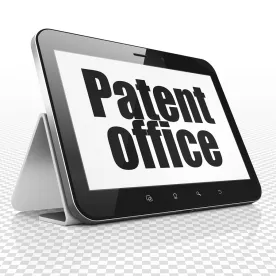The USPTO is seeking input on how it can leverage prior art information available on-line in related patent applications in order to “improve patent examination quality and efficiency” and reduce “applicant’s burden to provide this information to the USPTO.” The USPTO will be hosting a roundtable on this issue at its Alexandria, Virginia headquarters on September 28, 2016, at 1:00 pm, and solicits written comments by October 28, 2016.
Leveraging Prior Art To Improve Patent Quality
As set forth in the August 29, 2016 Federal Register Notice, the USPTO is seeking stakeholder input on “how the USPTO can better leverage applicant’s other applications having the same or substantially the same disclosure … as the U.S. application under examination, to provide examiners with relevant information as early as possible.” According to the Notice, the “USPTO believes that providing this information at the earliest possible stage of prosecution … can improve the examination efficiency and quality.”
The Federal Register Notice explains that international work sharing programs, such as the Global Dossier, “have resulted in the development of additional sources of information from foreign counterpart applications that is likely highly relevant to the U.S. application under examination.” The USPTO is asking for stakeholder input on how best to leverage this information, and strike the right balance between providing examiners with the most relevant information without overwhelming them with information of marginal relevance.
Simplifying Printed Patents
In the same Federal Register Notice, the USPTO solicits public input on how it can eliminate “potentially unnecessary information from the front page” of printed patents. That is, the USPTO seeks “public comment on what information, beyond a copy of the specification and drawing that is required by statute, should be part of the patent considering that complete information concerning U.S. patents and U.S. patent application publications are accessible to the public via the Patent Application Information Retrieval (PAIR) system.”
The USPTO’s Questions
The Federal Register Notice sets forth five specific questions for discussion at the roundtable and in written comments:
-
In balancing the goals of examination quality and efficiency, should the USPTO monitor other applications, besides domestic parent and counterpart foreign applications, for relevant information located therein for consideration in the instant U.S. application? If so, which other applications should be monitored (e.g., siblings, applications involving the same or related technology, etc.)?
-
What is the most convenient way to bring an application to the USPTO’s attention that should be monitored for information during the examination of a U.S. application (e.g., automated system, applicant notifies the USPTO, etc.)?
-
How should the USPTO determine which information from the monitored applications to provide examiners while ensuring they are not overburdened with immaterial and marginally relevant information?
-
If the USPTO were to import information from applicant’s other applications, how should the USPTO document the information imported into the image file wrapper of the instant U.S. application? For example, should the record reflect which domestic parent or counterpart foreign application the information was imported from, the date that the information was imported, and whether the examiner considered the imported information?
-
Taking into consideration the information that is publicly available in PAIR, what information should be part of a patent? For example, should prior art references and classification information still be listed on the front page of a patent?
Written comments can be sent by electronic mail addressed to PriorArtAccess@uspto.gov.
Will The USPTO Revise The Duty Of Disclosure?
Although the introductory section of the Federal Register Notice mentions the possibility of reducing an applicant’s burden to provide information from related applications to the USPTO, there is no further discussion of how this might be achieved, and no discussion question on this issue. Unless the Duty of Disclosure and/or Information Disclosure Statement rules are revised to relieve applicants of the burden of submitting references available to the examiner in a related application, any efforts the USPTO takes in this regard will be redundant to applicant efforts to comply with the Duty of Disclosure.
If the USPTO intends to revise these rules, would it be sufficient for an applicant to inform the examiner of all relevant related applications, or should applicants still be required to identify specific items of information cited in those applications that may be most relevant to patentability of the claims under examination?




 />i
/>i
